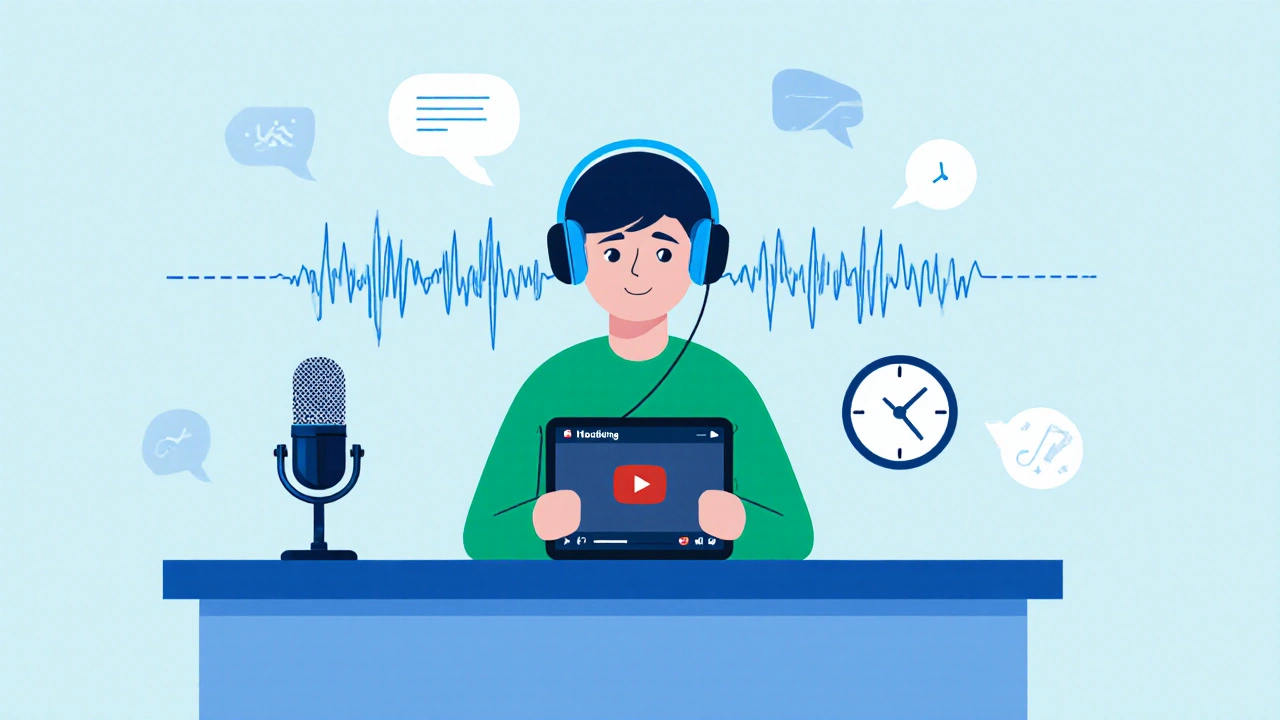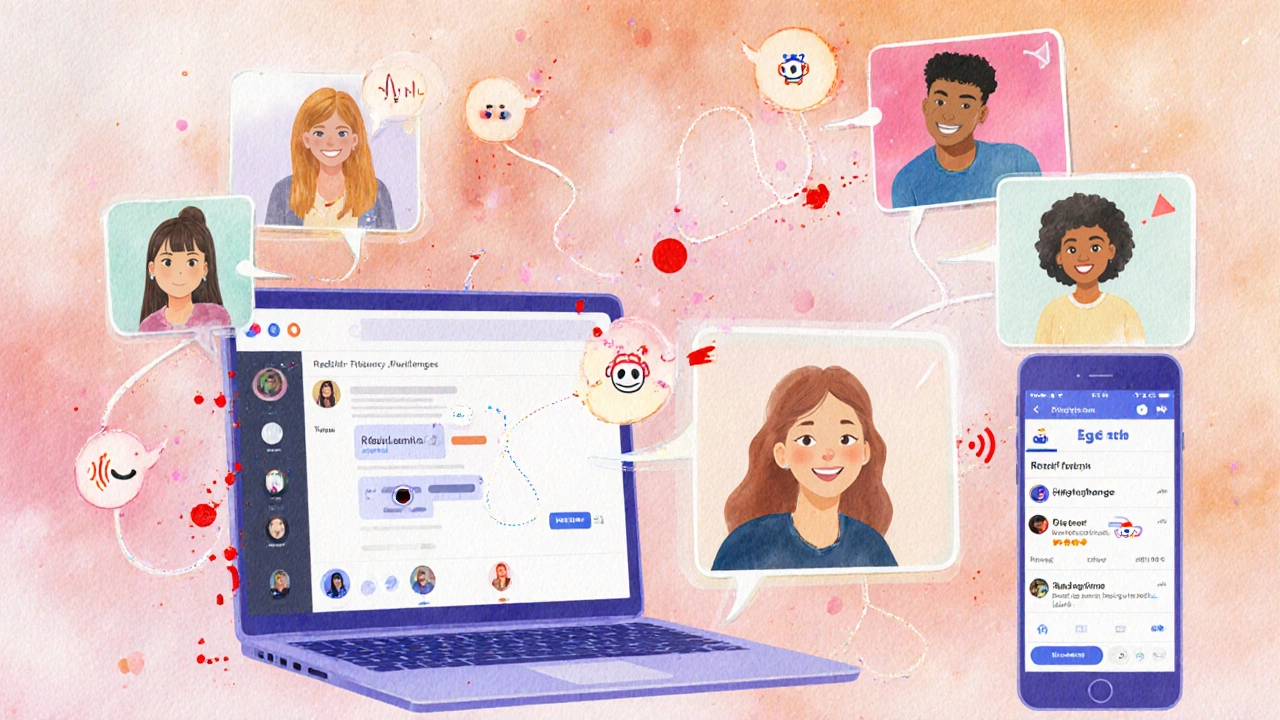Daily English Speaking Practice Tracker
Track Your Progress
Your Fluency Streak
0 daysWant to sound natural in English without spending a penny on pricey courses? learn English speaking fluently right from your living room, kitchen table, or wherever you feel most comfortable. Below you’ll find a step‑by‑step plan that uses only free tools, proven techniques, and a bit of daily discipline.
- Pick a dedicated spot and schedule - consistency beats intensity.
- Use free online resources such as YouTube, podcasts, and language‑exchange apps.
- Apply speaking‑boosting methods like shadowing, thinking aloud, and self‑recording.
- Track progress with simple metrics and celebrate tiny wins.
- Avoid common traps that stall fluency.
Understanding English speaking the ability to communicate verbally in the English language with clarity and confidence
Fluency isn’t just about vocabulary; it’s about turning thoughts into smooth speech without long pauses or frantic translation in your head. When you can think directly in English, you’ll notice faster reactions, clearer pronunciation, and a more relaxed conversation style. The good news? You can train your brain to think in English by exposing yourself to the language every day, even if you never step inside a classroom.
Set Up a No‑Cost Home Learning Hub
Before you dive into resources, create a mini‑studio that signals your brain it’s time to speak English. A quiet corner, a comfy chair, and a reliable internet connection are enough. Keep a notebook or a digital note app nearby for new phrases, and have a voice recorder (most smartphones have one built‑in) ready for quick playback.
Free Resources You Can Start Using Right Now
Below is a quick‑look table that groups the best free options by type. Each entry includes a short description, the main feature that makes it useful for speaking practice, and who will benefit most.
| Resource | Type | Main Feature | Ideal For |
|---|---|---|---|
| Duolingo a gamified language‑learning platform offering short speaking exercises | App | Instant speech‑recognition feedback | Beginners who like bite‑size lessons |
| BBC Learning English a free site with news‑based video and audio lessons | Website | Real‑world accent exposure | Intermediate learners aiming for news‑level fluency |
| YouTube the video platform hosting countless ESL channels | Video platform | Visual context + subtitles for shadowing | All levels, especially visual learners |
| Podcast audio‑only shows covering topics from daily life to tech | Audio | Improves listening & mimicking natural rhythm | Commuters and auditory learners |
| Language exchange online pairing of learners with native speakers for mutual practice | Community | Live conversation with instant feedback | Anyone ready for real‑time speaking |
| Shadowing technique repeating audio verbatim shortly after hearing it | Practice method | Boosts pronunciation & speed | All levels seeking accent improvement |

Practical Speaking Techniques You Can Do Anywhere
Having resources is half the battle; the other half is using them actively. Here are three proven methods that turn passive listening into speaking muscle memory.
- Shadowing: Choose a short video or podcast clip (30-60 seconds). Play it, then immediately repeat each sentence, matching intonation and speed. Record yourself and compare.
- Think‑aloud narration: Pick a daily activity-making coffee, walking the dog-and narrate what you’re doing in English. This moves thoughts directly into spoken form.
- Self‑recording: Use your phone’s voice memo app. Answer common interview questions or describe a news article, then listen for pauses, filler words, and mispronunciations.
Daily 30‑Minute Practice Blueprint
Consistent, focused practice beats marathon sessions. Follow this simple schedule, adjusting times to fit your routine.
- 5 minutes - Warm‑up: Read a short news headline out loud. Focus on clear articulation.
- 10 minutes - Shadowing: Pick a YouTube video from BBC Learning English, play a 1‑minute segment, and shadow it twice.
- 5 minutes - Vocabulary sprint: Write down 5 new phrases you heard, then use each in a sentence you speak aloud.
- 5 minutes - Language exchange chat: Open a free app like Speaky a community platform that matches language learners worldwide and have a quick voice call with a partner.
- 5 minutes - Reflection: Replay your recordings, note one improvement area, and set a tiny goal for tomorrow.

Avoid These Common Fluency Killers
Even the best plan can stall if you fall into old habits.
- Translations first: Stop mentally converting from your native language. Try to think directly in English.
- Skipping speaking: Listening without speaking limits muscle memory. Pair every listening session with a speaking activity.
- Fear of mistakes: Errors are data. Record them, review, and move on.
- Inconsistent schedule: Even 10 minutes daily beats a 2‑hour binge once a week.
Bonus: Free Communities and Challenges
Joining a group adds accountability. Consider these free options:
- Reddit r/EnglishLearning: Post recordings, get feedback, and discover weekly speaking prompts.
- Discord servers like "English Hub": Voice channels let you jump into impromptu conversations.
- 30‑day pronunciation challenge: Commit to posting a 30‑second clip each day on Twitter with #EngSpeak30.
Mini FAQ - Your Quick Answers
Can I become fluent without ever meeting a native speaker?
Yes, if you use language‑exchange apps, participate in voice chats, and consistently shadow native content, you can simulate real‑world interaction and achieve fluency.
How long does it usually take to sound fluent?
Most learners report noticeable improvement after 3-4 months of daily 30‑minute practice, but reaching near‑native fluency often needs 6‑12 months of focused effort.
Do I need a microphone for free practice?
A built‑in laptop or phone mic works fine. The key is to record and replay, not the equipment quality.
What’s the best free app for finding speaking partners?
Both Speaky and Tandem have robust free tiers; try the one with more native speakers in your time zone.
How can I measure my speaking progress without a teacher?
Track three metrics: number of filler words per minute, average sentence length, and pronunciation rating using free tools like Duolingo's speaking skill test.
Fluency isn’t a magic switch-it’s the result of tiny, daily wins. Grab a free resource, set a timer, and start speaking today. Your future self will thank you.





